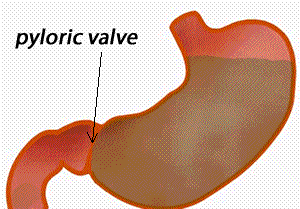All ethyl alcohol which is broken down in the body is first converted to acetaldehyde by three enzymes the most important one is called alcohol dehydrogenase. This enzyme is found in the liver and in cells lining the wall of the stomach.
Acetaldehyde is a poison and must be removed quickly. It is the acetaldehyde that is responsible for the headaches the morning after a heavy drinking session.

The way and rate with which people metabolise alcohol depends on gender, race and age to name a few. Lets look at some examples.
Women tend to have less of the enzyme alcohol dehydrogenase in their stomachs than men do. What this means is that a woman will, on average, have a much higher Blood Alcohol Content (BAC) than a man who has ingested the same amount of alcohol under identical conditions. If the same man and woman, however, are given an identical amount of alcohol intravenously they will tend to have the same BAC.
1) Why do you think this is so?
So unpleasant are the symptoms of acetaldehyde poisoning that the drug Antabuse has been developed to stop the breakdown of acetaldehyde and increase its concentration in the body. As many as half the Japanese population are estimated to show severe flushing after drinking.
It is estimated that individuals with severe build up of acetaldehyde do not go on to develop alcohol dependence because of the unpleasant symptoms of acetaldehyde poisoning.

The surface area of the human stomach, when compared to the small intestine, is very small. The surface area for food absorption in the small intestine is greatly increased by small protrusions called villi, hence, the small intestine is one thousand times more efficient than the stomach at absorbing alcohol.
Keeping the alcohol longer in the stomach will keep the BAC from rising quickly by slowing its rate of absorption and also allowing time for the stomach alcohol dehydrogenase to chemically breakdown the alcohol.
A valve called the pyloric valve prevents the stomach contents from flowing into the small intestine. This valve stays closed longer when food is present in the stomach. So the old saying "Always drink on a full stomach" makes sense. Drinking on an empty stomach causes the alcohol to be quickly moved on into the small intestine.

Researchers at Adelaide University, Australia found that the stomach emptied, on average, 21.1 minutes for those who drank mixed drinks made with diet cola. Whereas those that drank drinks made with regular cola, had an average emptying time of 36.3 minutes.BAC was 0.053 for the diet drinks and 0.034 for the regular sugar drinks.
2) What dose this say about how the stomach reacts to high energy drinks?
